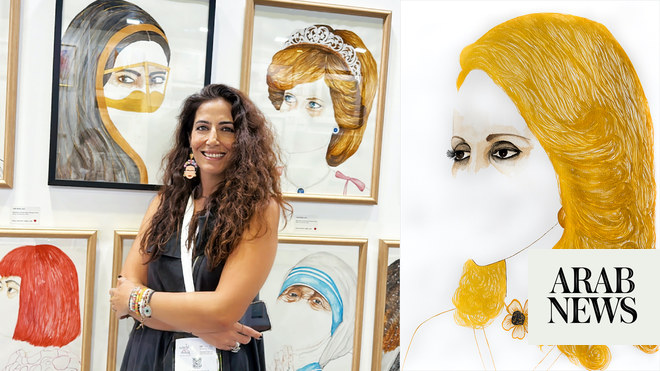
DUBAI: Lebanese Palestinian painter Caroline Ghantous’s series “I Am Woman,” which she started in the US, was a nod to iconic women from different eras of history and cultures.
For the latest updates, follow us on Instagram @arabnews.lifestyle
Here she discusses the painting of the iconic Lebanese singer Fayrouz, “I Am Fayrouz.”
I’ve always painted women, whether it was figures or portraits. The “I Am Woman” series started in 2017 when I was living in the States. I had a weird obsession with the 1920s — the flappers, the style, the hair, and the music. I started focusing on that.
The first portrait in the series was a flapper girl. Then I thought of maybe focusing more on iconic women from different eras of history and cultures. It developed from flapper girls to Marie Antoinette and Cleopatra.
I don’t know if I’ve differentiated Arab women, stylistically. Maybe if you look at their eyes, they’re a bit more detailed. It could be because of all the emotion. Maybe women in the Middle East have… not more to say, but they’ve been struggling to use their voice for a while.
Fayrouz has been in my life since I was born. My parents were always listening to her. They left right at the beginning of the Lebanese Civil War and were always attached to their culture. Fayrouz is a strong woman, who has always been so private about her life. She went through a lot, but she stayed true to herself and her country.
My watercolor portrait is based on a picture from one of her concerts. I decided to use gold paint, mixing powder pigment, gum arabic and water, because it’s more like a crown. It’s to honor her, in a way.
The whole series excludes the nose and the mouth. I just feel that the eyes are very expressive, regardless of what you’re feeling. Surprisingly, a lot of men have asked me why I am ‘silencing’ these women. My answer is that it is not only about voice, but about internal expression as well. In my mind, I absolutely feel that the piece is complete. There’s so much detail in the eyes and the hair. I feel like I know what the expression is, so you don’t need the rest of it. The fact that the nose and the mouth are missing it gives the audience room to interpret or complete it.












